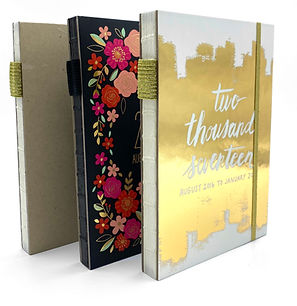Custom Cover Materials

Fabrics
Typically fabrics are wrapped around grey boards ranging from 1.5mm-2.5mm thick. The fabric is glued directly to the board, creating a firm and sturdy hard cover. There are a plethora of linen and cloth fabrics to choose from, with a broad range of weave patterns. Some of the most popular brands of fabric we work with are JHT, Dong-A, and Ecological Fibers, to name a few.
Paper
Paper covers can work for either a softcover or hardcover binding. Matte art paper offers a smooth surface, even more so when matte lamination is placed over the paper. We generally recommend around 150 GSM for this type of paper. Gloss Art paper is excellent for children’s books, where kids love to run their hands over the shiny finish.


Finishes
Adding a finish—a special coating—to your paper cover is a great way to ensure longer life.
-
Matte lamination for a smooth finish
-
Scuff-free lamination for dark covers that can scratch easily
-
Luxurious soft-touch lamination for an almost “fuzzy” feeling.
For fun tactile additions to your cover, consider foil stamping, spot UV, embossing, or debossing.
Foil stamping can be added to nearly any cover material in a variety of colors. Spot UV creates a raised coating wherever it is applied (often used on children’s books).
Embossing creates a raised surface of the cover (as though punched through from the other side). Debossing is the opposite, creating an imprinted design (stamped into the cover). Both of these features add depth to the cover.
.png)